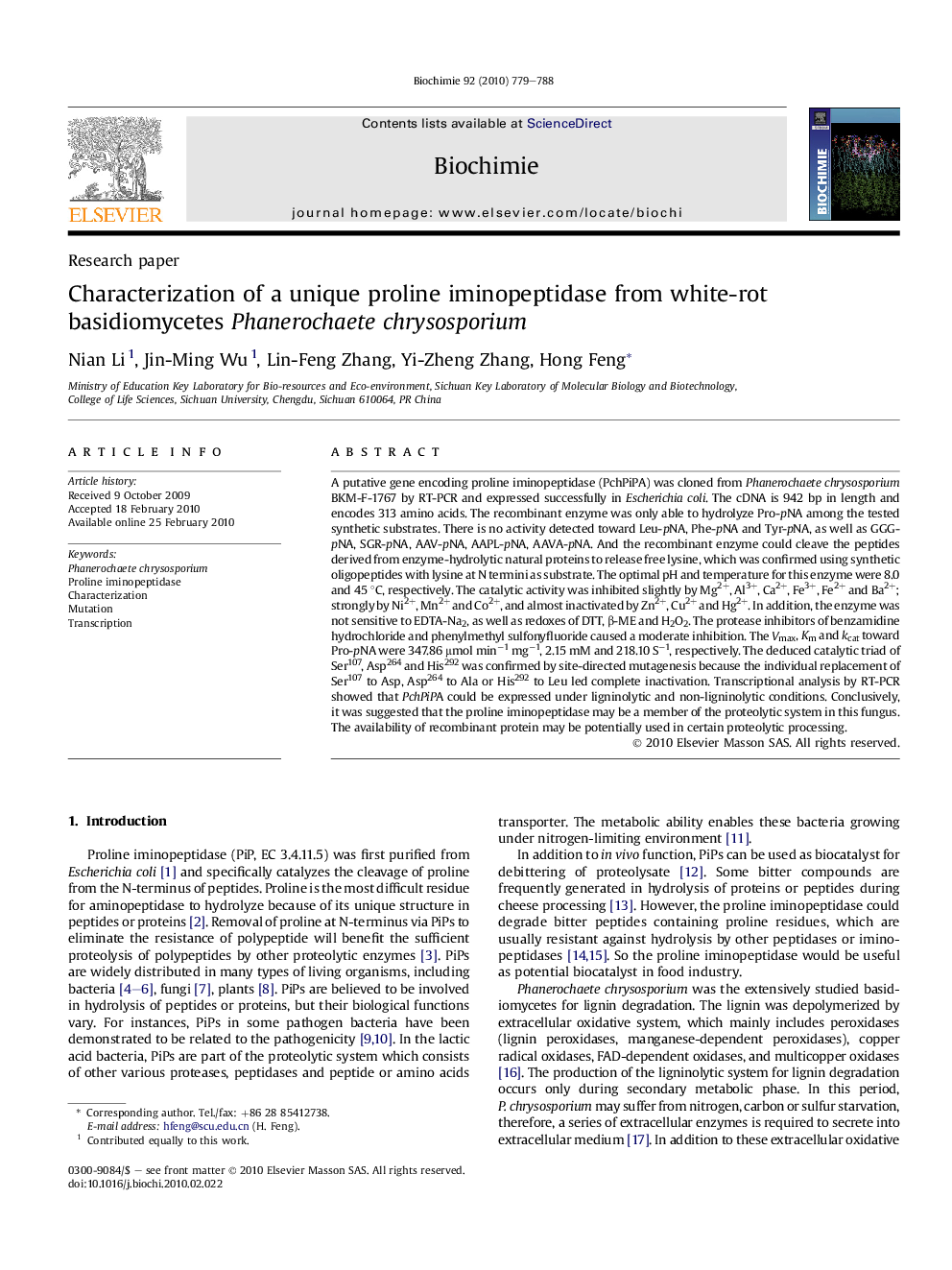| Article ID | Journal | Published Year | Pages | File Type |
|---|---|---|---|---|
| 1952752 | Biochimie | 2010 | 10 Pages |
A putative gene encoding proline iminopeptidase (PchPiPA) was cloned from Phanerochaete chrysosporium BKM-F-1767 by RT-PCR and expressed successfully in Escherichia coli. The cDNA is 942 bp in length and encodes 313 amino acids. The recombinant enzyme was only able to hydrolyze Pro-pNA among the tested synthetic substrates. There is no activity detected toward Leu-pNA, Phe-pNA and Tyr-pNA, as well as GGG-pNA, SGR-pNA, AAV-pNA, AAPL-pNA, AAVA-pNA. And the recombinant enzyme could cleave the peptides derived from enzyme-hydrolytic natural proteins to release free lysine, which was confirmed using synthetic oligopeptides with lysine at N termini as substrate. The optimal pH and temperature for this enzyme were 8.0 and 45 °C, respectively. The catalytic activity was inhibited slightly by Mg2+, Al3+, Ca2+, Fe3+, Fe2+ and Ba2+; strongly by Ni2+, Mn2+ and Co2+, and almost inactivated by Zn2+, Cu2+ and Hg2+. In addition, the enzyme was not sensitive to EDTA-Na2, as well as redoxes of DTT, β-ME and H2O2. The protease inhibitors of benzamidine hydrochloride and phenylmethyl sulfonyfluoride caused a moderate inhibition. The Vmax, Km and kcat toward Pro-pNA were 347.86 μmol min−1 mg−1, 2.15 mM and 218.10 S−1, respectively. The deduced catalytic triad of Ser107, Asp264 and His292 was confirmed by site-directed mutagenesis because the individual replacement of Ser107 to Asp, Asp264 to Ala or His292 to Leu led complete inactivation. Transcriptional analysis by RT-PCR showed that PchPiPA could be expressed under ligninolytic and non-ligninolytic conditions. Conclusively, it was suggested that the proline iminopeptidase may be a member of the proteolytic system in this fungus. The availability of recombinant protein may be potentially used in certain proteolytic processing.
